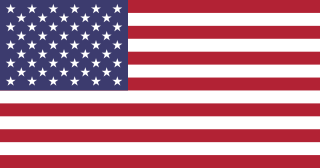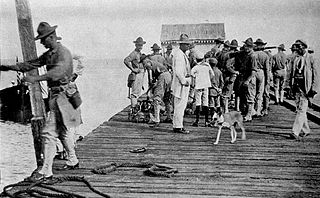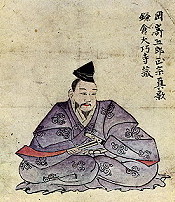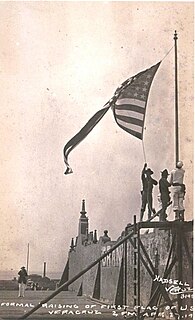 W
WThe United States occupation of Haiti began on July 28, 1915, when 330 US Marines landed at Port-au-Prince, Haiti, on the authority of US President Woodrow Wilson. The first invasion forces had already disembarked from USS Montana on January 27, 1914. The July intervention took place following the murder of dictator President Vilbrun Guillaume Sam by insurgents angered by his political murders of elite opposition.
 W
WThe first United States occupation of the Dominican Republic lasted from 1916 to 1924. It was one of the many interventions in Latin America undertaken by the military forces of the United States in the 20th century. On the 13 May 1916, Rear Admiral William B. Caperton forced the Dominican Republic's Secretary of War Desiderio Arias, who had seized power from Juan Isidro Jimenes Pereyra, to leave Santo Domingo by threatening the city with naval bombardment.
 W
WThe Bizone or Bizonia was the combination of the American and the British occupation zones on 1 January 1947 during the occupation of Germany after World War II. With the addition of the French occupation zone on 1 August 1948 the entity became the Trizone. Later, on 23 May 1949, the Trizone became the Federal Republic of Germany, commonly known as West Germany.
 W
WOperation Blacklist Forty was the codename for the United States occupation of Korea between 1945 and 1948. Following the end of World War II, U.S. forces landed within the present-day South Korea to accept the surrender of the Japanese, and help create an independent and unified Korean government with the help of the Soviet Union, which occupied the present-day North Korea. However, when this effort proved unsuccessful, the United States and the Soviet Union both established their own friendly governments, resulting in the current division of the Korean Peninsula.
 W
WMasamune (正宗), also known as Gorō Nyūdō Masamune , is widely recognized as Japan's greatest swordsmith. He created swords and daggers, known in Japanese as tachi and tantō respectively, in the Soshu tradition. No exact dates are known for Masamune's life. It is generally agreed that he made most of his swords between 1288 and 1328. Some stories list his family name as Okazakii, but some experts believe this is a fabrication to enhance the standing of the Tokugawa family.
 W
WThe Dominican Civil War took place between April 24, 1965, and September 3, 1965, in Santo Domingo, Dominican Republic. It started when civilian and military supporters of former President Juan Bosch overthrew acting President Donald Reid Cabral. The coup prompted General Elías Wessin y Wessin to organize elements of the military loyal to President Reid ("loyalists"), initiating an armed campaign against the so-called constitutionalist rebels. Allegations of foreign support for the rebels led to a United States intervention in the conflict, which later transformed into an Organization of American States occupation of the country. Elections were held in 1966, in the aftermath of which Joaquín Balaguer was elected into the presidential seat. Later in the same year international troops departed from the country.
 W
WThe Occupation of Iceland during World War II began with a British invasion intent on occupying and denying Iceland to Germany. The military operation codenamed Operation Fork was conducted by the Royal Navy and Royal Marines. In time, the British forces were replaced by Canadian and later American forces, despite the fact that the United States was not yet in the war.
 W
WThe United States occupation of Nicaragua from 1912 to 1933 was part of the Banana Wars, when the US military invaded various Latin American countries from 1898 to 1934. The formal occupation began in 1912, even though there were various other assaults by the U.S. in Nicaragua throughout this period. American military interventions in Nicaragua were designed to stop any other nation except the United States of America from building a Nicaraguan Canal.
 W
WThe Allied occupation of Japan at the end of World War II was led by the United States, whose then-President Harry S. Truman appointed General Douglas MacArthur as the Supreme Commander for the Allied Powers, with support from the British Commonwealth. Unlike in the occupation of Germany, the Soviet Union was allowed little to no influence over Japan. This foreign presence marks the only time in Japan's history that it has been occupied by a foreign power. At MacArthur's insistence, Emperor Hirohito remained on the imperial throne. The wartime cabinet was replaced with a cabinet acceptable to the Allies and committed to implementing the terms of the Potsdam Declaration, which among other things called for the country to become a parliamentary democracy. Under MacArthur's guidance, the Japanese government introduced sweeping social reforms and implemented economic reforms that recalled American "New Deal" priorities of the 1930s under President Roosevelt. The Japanese constitution was comprehensively overhauled and the Emperor's theoretically-vast powers, which for many centuries had been constrained by conventions that had evolved over time, became strictly limited by law. The occupation, codenamed Operation Blacklist, was ended by the San Francisco Peace Treaty, signed on September 8, 1951, and effective from April 28, 1952, after which Japan's sovereignty – with the exception, until 1972, of the Ryukyu Islands – was fully restored.
 W
WThe Raid at Renacer Prison was an attack on the El Renacer prison in Gamboa, Panama, by units of the 82nd Airborne Division of the US Army on 20 December 1989, during the United States invasion of Panama. During the raid the U.S. military freed the sixty-four prisoners held in the detention facility and killed 5 soldiers of the Panama Defense Forces.
 W
WScarlett Martínez International Airport, also known as Río Hato Airport, is an international airport serving Río Hato, a town in the Coclé Province of Panama. The airport is 3 kilometres (2 mi) east of Río Hato.
 W
WThe United States Invasion of Panama, codenamed Operation Just Cause, lasted over a month between mid-December 1989 and late January 1990. It occurred during the administration of President George H. W. Bush and ten years after the Torrijos–Carter Treaties were ratified to transfer control of the Panama Canal from the U.S. to Panama by 1 January 2000. During the invasion, de facto Panamanian leader, general and dictator Manuel Noriega, who for a long time worked with the Central Intelligence Agency, was deposed citing racketeering and drug trafficking. Following the operation, the Panama Defense Forces were dissolved and President-elect Guillermo Endara was sworn into office.
 W
WThe Reconstruction era was the period in American history that lasted from 1863 to 1877 following the American Civil War (1861–65) and is a significant chapter in the history of American civil rights. Reconstruction ended the remnants of Confederate secession and abolished slavery, making the newly freed slaves citizens with civil rights ostensibly guaranteed by three new constitutional amendments. Reconstruction also refers to the attempt to transform the 11 Southern former Confederate states, as directed by Congress, and the role of the Union states in that transformation.
 W
WThe Occupation of the Rhineland from 1 December 1918 until 30 June 1930 was a consequence of the collapse of the Imperial German Army in 1918. Despite Germany's proving victorious on the eastern front following the Russian Revolution, the military high command had failed to prevent the continuing erosion of morale, both domestically and in the army. Despite transferring veteran troops from the eastern front to fight on the western front, the Spring Offensive was a failure and following the outbreak of the German Revolution, Germany's provisional government was obliged to agree to the terms of the 1918 armistice. This included accepting that the troops of the victorious powers occupied the left bank of the Rhine and four right bank "bridgeheads" with a 30 kilometres (19 mi) radius around Cologne, Koblenz, Mainz and a 10 kilometres (6 mi) radius around Kehl. Furthermore, the left bank of the Rhine and a 50 kilometres (31 mi)-wide strip east of the Rhine was declared a demilitarized zone. The Treaty of Versailles repeated these provisions, but limited the presence of the foreign troops to fifteen years after the signing of the treaty. The purpose of the occupation was on the one hand to give France security against a renewed German attack, and on the other to serve as a guarantee for reparations obligations. After this was apparently achieved with the Young Plan, the occupation of the Rhineland was prematurely ended on 30 June 1930. The administration of occupied Rhineland was under the jurisdiction of the Inter-Allied Rhineland High Commission with its seat at the Upper Presidium of the Rhine Province in Koblenz.
 W
WThe Shibuya incident was a violent confrontation which occurred in June 1946 between rival gangs near the Shibuya Station in Tokyo, Japan. The years after World War II saw Japan as a defeated nation and the Japanese people had to improvise in many aspects of daily life. In the chaos of the post-war recovery large and very lucrative black markets opened throughout Japan. Various gangs fought for control over them. There were also many non-Japanese "third nationals" in post-war Japan. These "third nationals" or "third-country people" were former subjects of the Empire of Japan whose citizenship then transferred to other countries like China and Korea. The Shibuya incident involved former Japanese citizens from the Japanese province of Formosa fighting against native Japanese Yakuza gangs. After the fight, the Chinese nationalist government stepped forward to defend the Formosans.
 W
WThe United States Army Military Government in Korea (USAMGIK) was the official ruling body of the southern half of the Korean Peninsula from September 8, 1945 to August 15, 1948.
 W
WThe United States occupation of Veracruz began with the Battle of Veracruz and lasted for seven months, as a response to the Tampico Affair of April 9, 1914. The incident came in the midst of poor diplomatic relations between Mexico and the United States, and was related to the ongoing Mexican Revolution.